
Region 2: Lower Central Andaman Islands
(See bottom of post for links to more regions)
The Lower Central Andaman Coast is a subdued region where crowded beach parties are virtually non-existent. Either relax in an upscale resort on the northern islands specifically developed for tourists, or experience island life and the fishing villages on the southern islands where tourism is an afterthought.
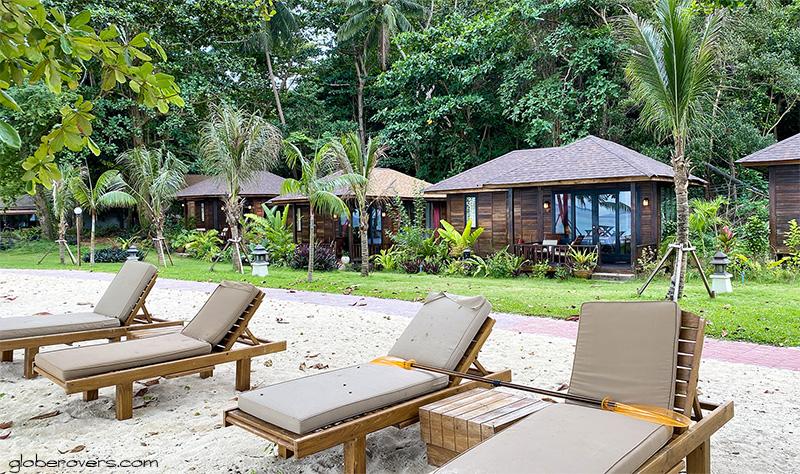
Table of Contents
Location & Gateway
The Lower Central Andaman Coast region stretches from Koh Sukorn in the south all the way north to Koh Ngai—a distance of about 60 kilometres (37 mi). The region’s islands can be divided into three sections based on which mainland pier they use: The south (Koh Sukorn, Koh Phetra and Koh Lao Liang), central (Koh Libong and Koh Rok), and the north (Koh Kradan, Koh Mook, and Koh Ngai).
Where gorgeous beaches and quaint fishing villages are the focus.
Koh Libong is by far the largest island, followed by Koh Sukorn and Koh Mook.
This region is primarily accessed from the town of Trang, which has a domestic airport, as well as train and bus stations. Alternatively, the towns of Phuket, Krabi, and even Hat Yai in the south-east are gateways to the region.
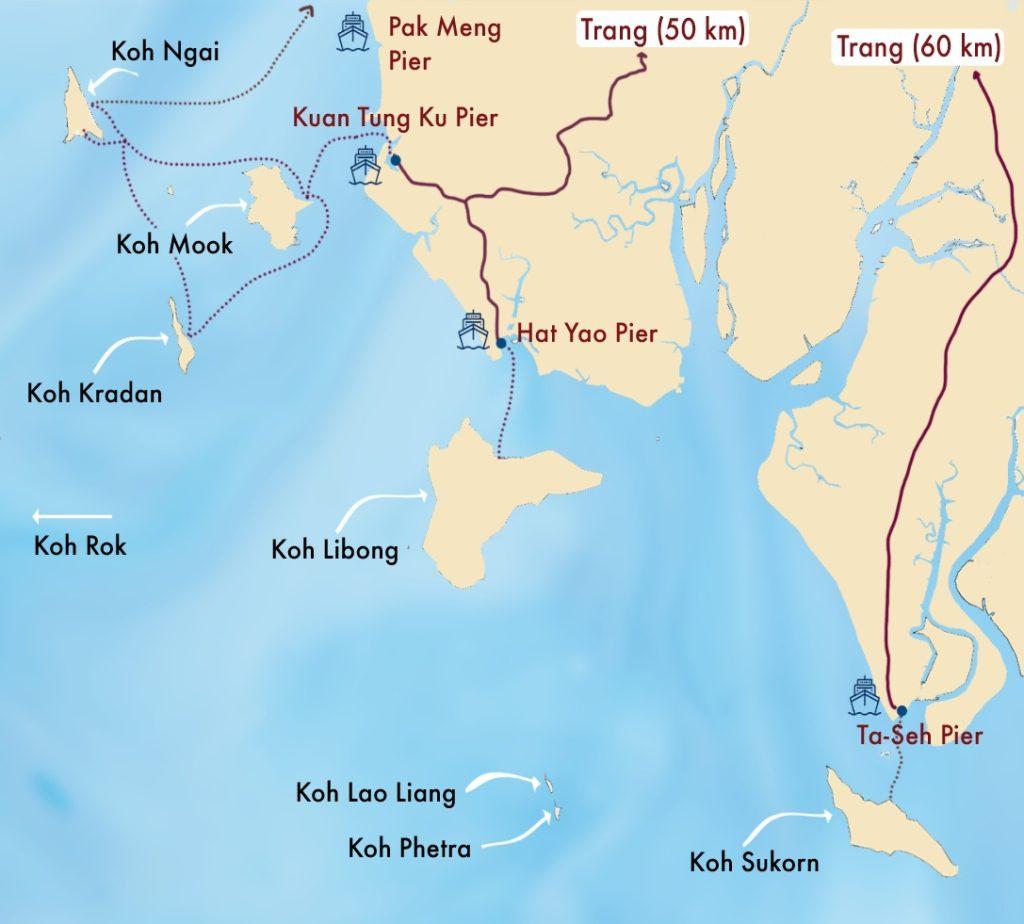
Notable Islands with Lodging
The islands with accommodation are Koh Sukorn, Koh Libong, Koh Kradan, Koh Mook, and Koh Ngai while others, such as Koh Lao Liang, have only camping facilities. Only Koh Sukorn, Koh Libong, and Koh Mook have local fishing villages.
The other islands remain rather unspoiled as in the absence of local communities, the jungle has not been slashed and burned to make way for agriculture and livestock.
1) Koh Sukorn
On the southernmost island in this region, Koh Sukorn, tourism is an afterthought as the local villagers go about their daily lives of fishing and working in their coconut and rubber tree plantations. The island is also known for its succulent watermelons and cashew nuts. During crab season some locals freely share their daily crab curries with passing travellers.
The island is quite flat with only two hills, one of them offering a panoramic viewpoint overlooking the Andaman Sea and the island itself. It has long stretches of beach along the western side, although they are not as picturesque as beaches elsewhere. The attraction here is the island life, and wide unspoiled beaches which are great for long walks.

2) Koh Libong
Koh Libong is likewise not known for its idyllic beaches, though it is ideal for experiencing the lives of the islanders. Almost the entire west coast is undeveloped with long stretches of golden beaches only interrupted by rocky outcrops.
Among the many natural attractions here are the unusual rock formations and, in particular, the rocks at Libong Stone Bridge north of the island’s scenic Tung Yaka Beach. In the south is Fisherman’s Cave at Point Dugong where an opening in a limestone tower with impressive caves looks out over the bay.
Endangered dugongs, protected as part of the Libong Archipelago Wildlife Reserve, can be spotted in the waters and mangroves. The dugongs can also be seen from a high purpose-built tower at Ban Ba Tu Pu Te village or by taking a boat tour.
A few resorts are clustered along the southwestern side of the island at Haad Lang Kao Beach where the northern part of the beach, near Dugong Resort, is quite lovely.
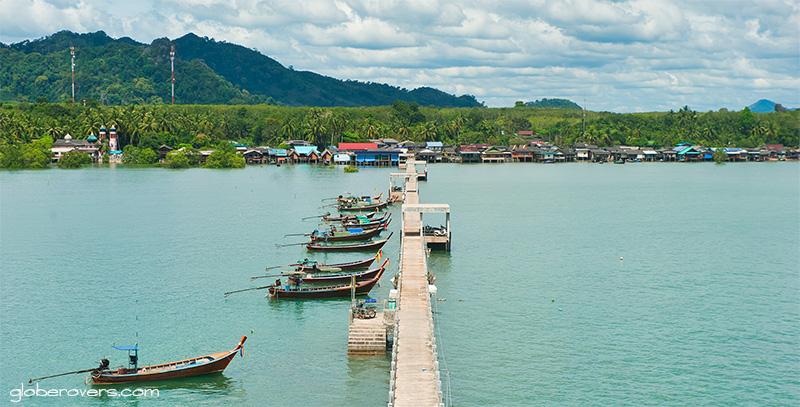
3) Koh Kradan
Located north-west of Koh Libong and much further away from the mainland, Koh Kradan has a few resorts along its eastern shores and no local villages.
The rest of the island is a thick jungle that forms part of the Hat Chao Mai National Park. The only reason for coming to this island is for its stunning postcard-beautiful beach with turquoise waters, aptly named Paradise Beach.
The nearby coral reefs offer great snorkelling directly from the beach. Koh Kradan is often described as the “hidden gem of the Andaman Sea” and “the ultimate paradise island of Thailand”.
As resorts here are quite pricey with no option of eating cheaply in a local village, those on a tight budget are better off staying on Koh Mook and visiting Koh Kradan on a day trip.
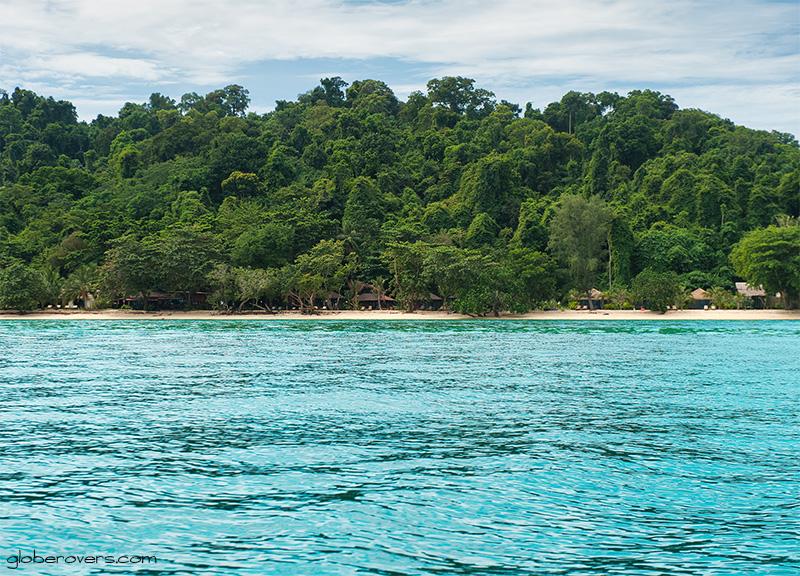
4) Koh Mook
Koh Mook (also written “Muk”), has a good mix of tourist facilities and local villages as well as great hiking, excellent beaches, good snorkelling, reasonable accommodation, and even an open cave with a hidden entrance! Nearly half of the island is part of the Hat Chao Mai National Park while the remainder has fishing villages with some stilted houses perched above the sea.
On the east side, the large Koh Mook Sivalai Beach Resort is flanked by the stunning Pearl and Sivalai Beaches. Across the island on the south-western end is the wide Farang Beach and further north is the hidden Sabai Beach.
Just a few hundred metres south of Sabai Beach is Koh Mook’s star attraction, the Emerald Cave (also known as Morrakot Cave). The cave is best reached by a long-tail boat. Be here halfway between low- and high-tide to take a 10-minute nerve-wracking swim through the pitch dark bat-filled cave to reach the lovely white sandy beach and its emerald-green water surrounded by high cliffs overgrown with lush vegetation.
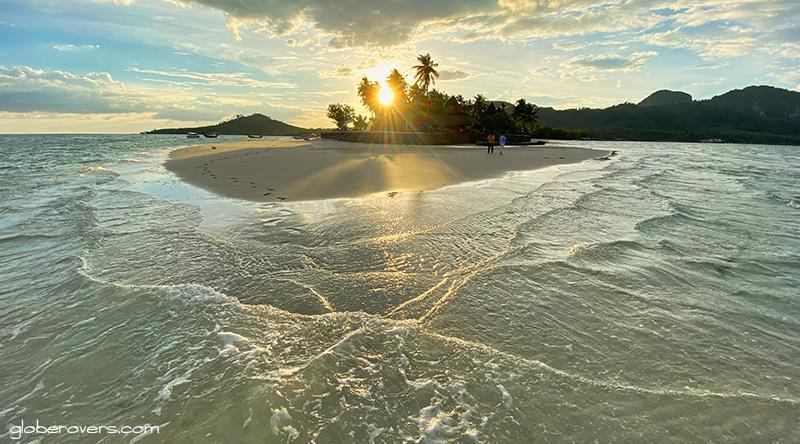
5) Koh Ngai
Koh Ngai, pronounced “Koh Hai”, is the closely related sister island of Koh Kradan. Koh Ngai also has no local village life, no roads, and no independently owned restaurants and shops as the island is dedicated to upscale tourism. The island has lots of tranquillity, unspoiled jungle, and just a couple of resorts along one of Thailand’s most gorgeous beaches. Most visitors rarely leave the luxury of their beachfront resorts where everything is provided.
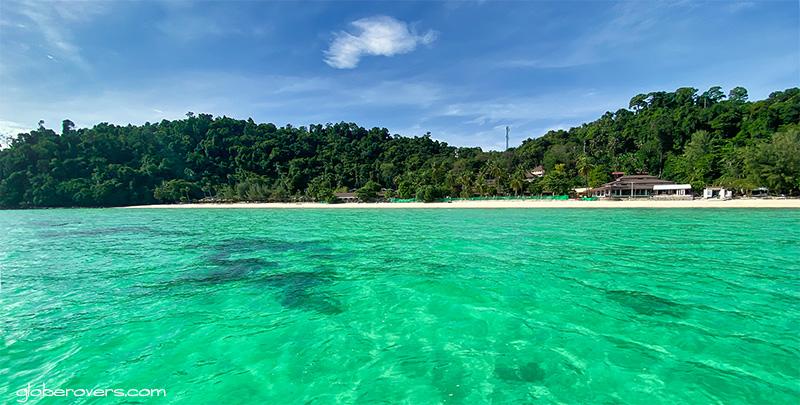
6) Islands with no accommodation
Snorkelling off the beach is good, though it is much better at nearby Koh Chueak, Koh Waen and Koh Ma. These small rocky islands also make the perfect backdrop for photos from the beach.
Koh Lao Liang, which forms part of the Mu Ko Phetra National Park, consists of two islands. Koh Lao Liang Nong, or “little brother island”, is located north of the narrow channel that separates it from Koh Lao Liang Phi, or “big brother island”.
Both are covered in thick jungle, huge banyan trees, and have tall limestone cliffs rising dramatically over their magnificent beaches. Koh Lao Liang Nong was home to the Laoliang Resort which offers tents by the beach, though their lease was not renewed by the National Parks and it closed. Rumour has it that “soon” camping with your own tent may be allowed here.
The Unspoiled Beaches
The most beautiful beaches and clearest waters in this region are at the northern islands—Koh Ngai, Koh Mook, Koh Kradan and Koh Rok—and at the southern islands that are further away from the mainland, including Koh Lao Liang and Koh Phetra.
The islands closest to the mainland—Koh Libong and Koh Sukorn—are more popular for their tranquil villages with friendly locals rather than the beaches. While not the most beautiful, each beach has its own special charm.
The best beaches on islands with accommodation are:
1) Sabai Beach, Koh Mook
A rugged jungle trail leads from Koh Mook’s northern pier north-west along the rocky coast to Lo Dung Beach, which is not spectacular but has great views of the cliffs towering above the sea. It is possible to get here by motorbike or bicycle, though the dirt trail is narrow and fairly rough.
Continue west on this overgrown trail through the lush jungle until you reach the beach. Flanked on both sides by impressive limestone cliffs, this is one of the most scenic locations in the region. The sand is slightly coarse and the water is brilliantly clear.

2) Tung Yaka Beach, Koh Libong
This long and undeveloped beach with lots of palm trees is located along the central west coast. Without a boat, this beach can be reached on two wheels.
From the resorts in the south-west, a 15 kilometre (9.3 mi) ride on a tiny paved road passes the small Muslim fishing village, Ban Ba Tu Pu Te, in the south and then continues north past Baan Maphao village to Tohkay Bay. Here the road turns west and then south, past the famous Libong Stone Bridge (locally known as “Saphan Hin”), and on to Tung Yaka Beach.
With no tourist accommodation on this part of the island and few locals living here, the beach is empty most of the time. The broad expanse of golden sand is great for long walks with only nature as your companion.
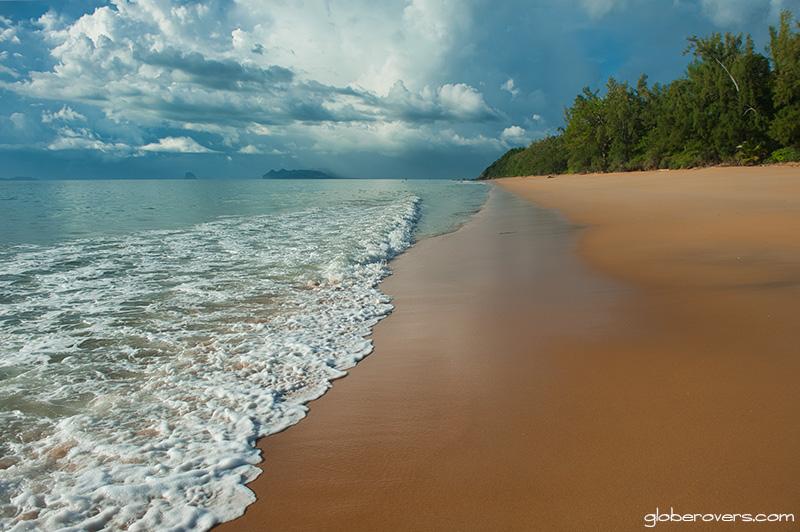
3) Pearl Beach, Koh Mook
The east side of Koh Mook forms a sharp point facing the mainland. Around this point Pearl Beach is one of the most scenic beaches in the region at low tide, as during high tide much of it disappears under the waves.
From the southern side of the beach at the Koh Mook Sivalai Beach Resort, thousands of starfish can be spotted during low tide, along with the occasional appearance of huge colonies of tiny red crabs that roam over large patches of the beach at sunrise.

4) Sunset Beach, Koh Kradan
Located directly across from the southern part of Paradise Beach in a small bay on the west side of the island, is Sunset Beach, accessible by a well-marked jungle trail. Sadly, a thick pile of old plastic garbage has built up behind the beach. Look towards the sea, away from the unsightly rubbish, and enjoy this secluded beach, especially at sunset. It is unquestionably one of the most beautiful beaches in the region.

5) Beaches of Koh Rok
The sister islands of Koh Rok Yai and Koh Rok Noi are over 30 kilometres (18.6 mi) west of Koh Libong. The islands have no local villages or resorts other than a National Parks office that rents out a few bungalows and tents along the beach. The beaches are picturesque with crystal clear water.
6) Island beaches with no accommodation
Koh Lao Liang’s two islands have some of the best beaches in this region. At Koh Lao Liang Nong vertical limestone cliffs tower over the beach on three sides and while it is relatively small, the scenery is breathtakingly beautiful. Koh Lao Liang Phi has even larger cliffs and a beach twice as long as its smaller brother.
Also with no accommodation, Koh Phetra boasts a sweeping white sand beach with spectacular limestone ridges and jungle-fringed cliffs, honeycombed with caves and overhangs. The steep walls on both sides of Koh Phetra are home to thousands of sea swallows.
Practical Information
Getting there: Koh Sukorn in the south is served by Ta-Se Pier, while centrally located Koh Libong is served by Hat Yao Pier. Khuan Tung Ku Pier provides access to the northern part of this region which includes Koh Mook, the closest island, as well as Koh Ngai to its north and Koh Kradan to its south.
Pak Meng Pier also services these three northern islands, particularly Koh Ngai. All four piers are best reached from the town of Trang. Alternatively, the towns of Krabi to the north-west, and Hat Yai to the south-east, have airports but are much further away than Trang. Hat Yai also has a train line connected to Bangkok.
Getting around: Only Koh Mook, Koh Libong and Koh Sukorn have small roads fit for bicycles or motorbikes. All three islands have local villages so it is a pleasure to drive around and explore the islands while meeting the friendly locals.
Sleep, eat and drink: The islands with villages—Koh Mook, Koh Libong and Koh Sukorn—have restaurants targeted at the locals where Thai food is served at incredibly reasonable prices. The islands with resorts but no local villages have restaurants with inflated tourist prices.
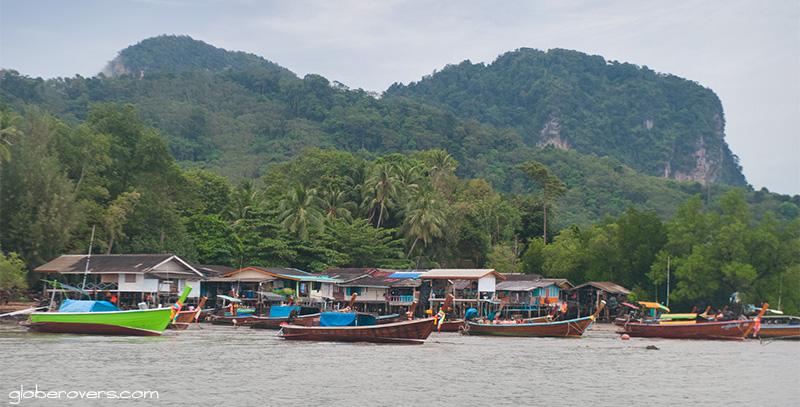
Links to all island regions of Thailand
Overview and map of Thailand’s Islands
Region 1: Southern Andaman (Koh Lipe area)
Region 2: Lower Central Andaman (Koh Mook area) – YOU ARE HERE
Region 3: Upper Central Andaman (Koh Lanta area)
Region 4: Northern Andaman (Koh Phayam area)
Region 5: Central Gulf of Thailand (Koh Samui area)
Region 6: Eastern Gulf of Thailand (Koh Chang area)
Region 7: Northern Gulf of Thailand (Koh Samet area)
10 Best Beaches on Thailand’s Islands
Notes when reading the details in each region
- In the Thai language, “koh” means “island”, so the correct way to refer to the island of Phuket, for example, is “Koh Phuket” rather than “Koh Phuket Island”. “Ao” means “beach”, so “Ao Nang” means “Nang Beach”. “Mu koh” means “archipelago”, so “Mu Koh Ang Thong” means “Ang Thong Archipelago” .
- Some of Thailand’s islands have the same or similar names. Some examples include Koh Chang in the Gulf of Thailand, and Koh Chang Noi along the northern Andaman Coast; and Koh Ngam Yai and Koh Ngam Noi near the town of Chumphon, which is far from Koh Ngam at the southeastern tip of Koh Chang near Cambodia.
- Covid-19 is decimating the tourist infrastructure on Thailand’s islands. Most tourist services, including accommodation and transport services, available pre-Covid are not currently accessible, and may not be restored for a while.
- While some islands can be reached by public ferries, speedboats and long-tail boats, some are only accessible by private boat rental.
- Much effort has been made to provide information that is as accurate as possible, but please do your own extensive research to get the latest information.
- This article focuses on the best beaches on islands with accommodation, though islands managed by the National Parks offering tents for rent are also included. We also include noteworthy islands and beaches of interest with no accommodation.
- This article is not intended as a comprehensive guide to all islands of Thailand.
☛ Read more: Blog posts of Thailand

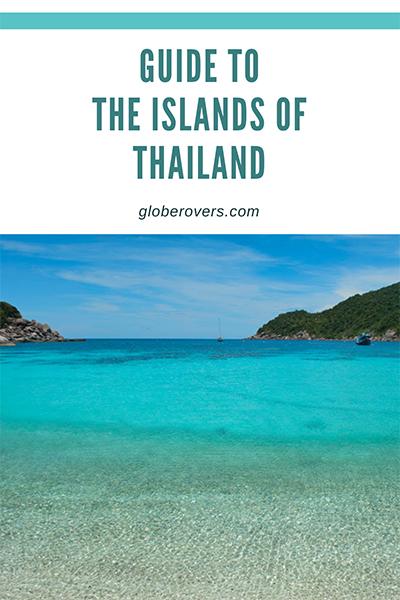
Additional Reading
CNN Traveler: The 11 best islands in Thailand
Top 10 Best Thai Islands that need to be on your bucket list

Blog post and photos by Peter who has been travelling almost full-time since 2005 and has been to over 122 countries. He visited several countries, such as Japan, more than 20 times. Peter is Editor-in-Chief and Publisher of GlobeRovers Magazine, an independent travel magazine focused on intrepid destinations.
